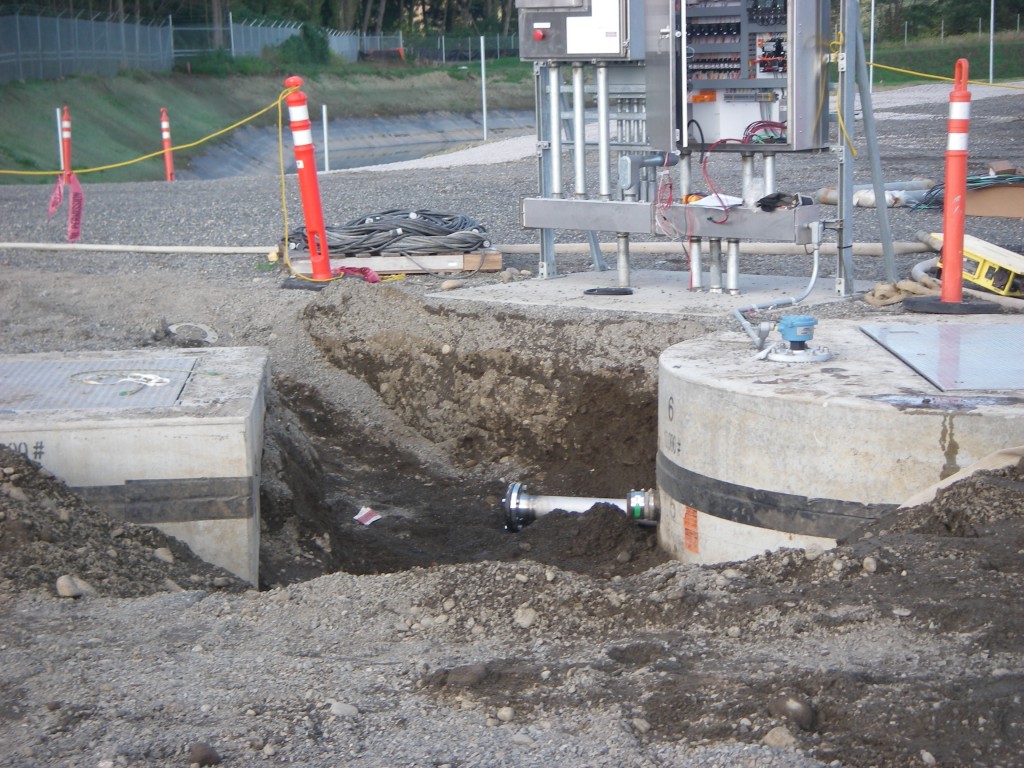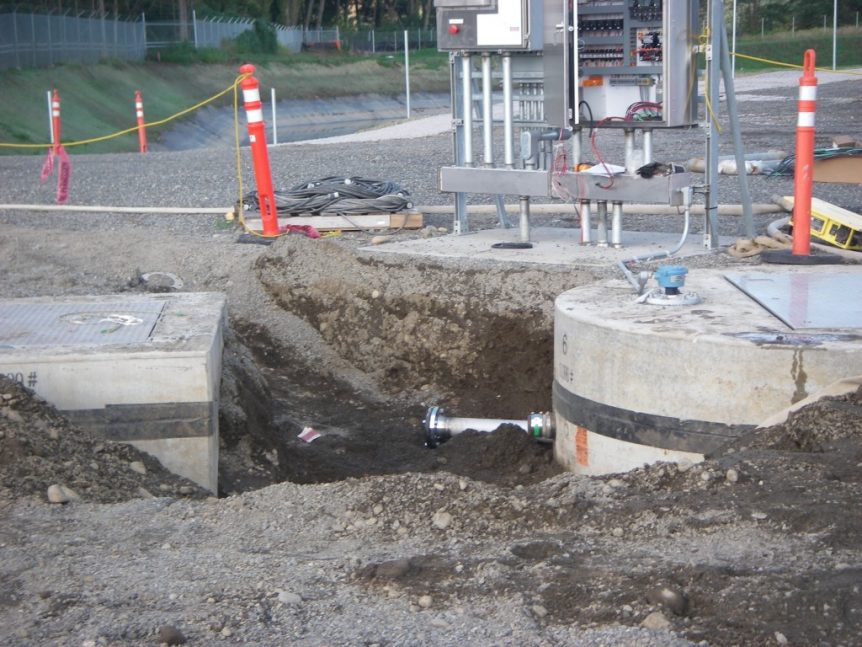
British Petroleum’s Cherry Point Refinery is the subject of part three of the industrial stormwater blog series. This refinery is located near Birch Bay, Washington and is less than a mile from the Salish Sea shoreline. It is the biggest oil refinery in the State of Washington, producing as many as a quarter of a million barrels per day. To address runoff concerns, Cherry Point purchased a Romtec Utilities stormwater pump station.
According to the Cherry Point Refinery Environmental Policy, Cherry Point recognizes and is committed to the protection and respect of the environment within which the refinery operates. The majority of the refinery’s impervious surfaces drain into the facility’s on-site wastewater treatment center, but part of the refinery was not draining into that system.
The federal permits and requirements as discussed in part one of this series stipulated regulations for wastewater treatment and required stormwater plans for future construction projects larger than one acre. The refinery occupies about 3,300 acres, so installing a large stormwater pump station became an attractive solution. In addition to a stormwater pump station, semi-impervious gravel areas would be resurfaced to drain more effectively and limit the concentration of suspended dirt particles.
Addressing stormwater issues with this approach was a responsible and forward thinking solution to stormwater events at the Cherry Point Refinery. The Cherry Point Refinery is located near two important natural habitats, Birch Bay State Park and the Strait of Juan de Fuca. It is less than 1000 feet from Terrell Creek, which flows into the park, and less than a mile from the shoreline.
With these prominent recreation areas and habitats nearby, adding a robust pump station lessened any immediate and future concerns for stormwater runoff. Romtec Utilities worked with Jacob’s Engineering out of Bellevue, Washington to design the Cherry Point pump station. Jacob’s engineering supplied Romtec Utilities with information about the job site and the pump station requirements. They also worked directly with the Cherry Point Refinery to establish a clear plan for the pumping goals of the system.
The end result was a submersible pump station in a duplex configuration. Duplex configurations are typically used as a failsafe in case one pump fails during a pumping cycle. With stormwater, an overflow scenario is not the same concern as is it would be with sewage, but the Cherry Point Refinery valued installing a system that would protect the environment even in unlikely circumstances.
This attitude also extended to the system’s level sensing and controls. The primary level sensing device was a set of mechanical floats. The system included backup level sensing with an ultrasonic transducer that was prefabricated into the top slab. The ultrasonic device also served as redundant controls for the pump station. The level of backup systems on this pump station is not typical for stormwater systems, but the BP managers at Cherry Point realized the importance of eliminating possibilities of oil and gas pollution.
With Romtec Utilities, Jacob’s Engineering, and the Cherry Point Refinery, a dependable solution was developed to solve the industrial stormwater concerns at this oil refinery. This is another example of an oil and gas company embracing the modern climate of water infrastructure environmental responsibility.
Next week, we will look at a literally packaged pump station for Dow Chemical.

